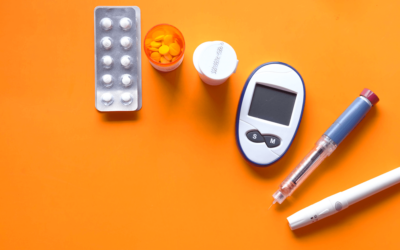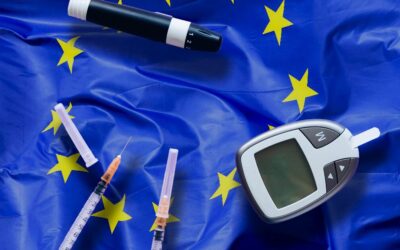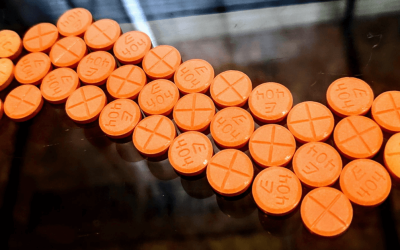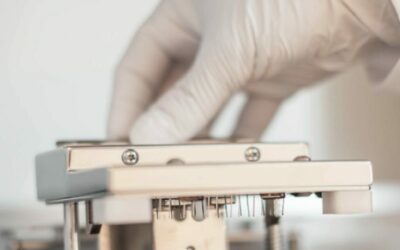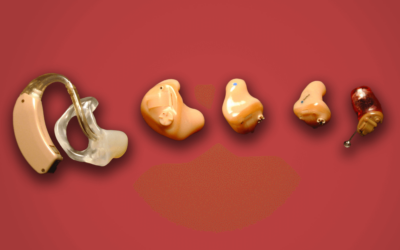Latest News
Updated ISO 10993-17:2023 Standard
The ISO 10993 standard series covers the biological evaluation of medical devices. Part 17 of this series addresses the toxicological risk of chemical constituents resulting from the chemical characterization of medical devices. In its first major revision in 20 years, the new ISO 10993-17:2023 was published on 13 September. This update has consequences for all medical device manufacturers who must comply with the new requirements.
ISO 10993-17:2023 introduces some new concepts for toxicological risk assessments, such as toxicological screening limits (TSLs) and maximum estimated exposure dose (EEDmax), which will improve accuracy and reliability. These major changes will impact medical device manufacturers when they prepare to introduce or update products.
Our CTO, Carsten Baun Senholt, is a sitting member of the international technical committee TC 194, which designed the new standard. Therefore, our certified QMS and toxicological risk assessments are fully compliant.
Read more about how we can help you with ISO 10993-17 compliance:
Biological Evaluation Report
Safely Manage Change
New FDA NDSRI Guidelines
The Food and Drug Administration (FDA) is updating its guidance regarding Nitrosamine Drug Substance-Related Impurities (NDSRIs). With this update, the FDA acknowledges the leading scientific research by introducing a novel framework for determining the Acceptable Intake (AI) of NDSRIs.
This updated guidance defines five NDSRI potency categories and establishes a framework for setting a scientifically relevant AI based on the compound-specific chemical structures of identified NDSRIs. Most interestingly, the agency recognizes that setting a fixed AI limit for the total level of a mix of different nitrosamine impurities may be impractical if the potency categories of the implicated NDSRIs vary greatly.
This guidance is for immediate implementation, and the agency recommends reevaluating the NDSRI risk in your products before November 2023.
SAXOCON provides toxicological risk assessments of NDSRIs that help your products meet agency expectations.
Check out how we can help here.
New ECHA Chemicals Enforcement Project
The European Chemical Agency (ECHA) is launching a project to check the compliance of products sold online with REACH and CLP requirements. Currently, chemical products sold online are largely non-compliant. Starting in 2025, ECHA inspectors will check products sold online for compliance and, thanks to stricter rules governing online sales, have enhanced enforcement mechanisms.
Are you sure the products you sell online are ready for the upcoming stricter inspections? According to the ECHA, probably not, as they found that 78% of tested mixtures and articles sold online were non-compliant.
We can help you ensure that your products comply with the new regulations, allowing you to continue to sell online without interruption.
Read more about how we can help her.
Particulate Contamination
Particulate contamination is a risk in pharmaceutical production facilities. Good Manufacturing Practice (GMP) and proper risk management requires identifying root causes and evaluating what impact a particulate matter finding has on product safety. Understanding the risk as quickly as possible is crucial when deciding whether to release or recall affected product batches.
SAXOCON has the facilities, expertise, and experience to quickly assess, process, and mitigate any unexpected findings. We can test for particulate contamination according to ISO 8536, “Infusion equipment for medical use part 4: Infusion sets for single use, gravity feed, A.2 Test for particulate contamination”, with the ability to filter up to 20 samples and analyse 20 filters. Once testing is completed, we send a comprehensive report of the results.
Check out how SAXOCON can help here and here.
Nitrosamine Contamination
As a pharmaceutical manufacturer, you need to know whether your products contain nitrosamine impurities and, if so, whether they are below the thresholds established by various regulatory agencies.
Nitrosamine impurities can be introduced at any stage in the supply chain, during manufacturing, or as leachables from packaging and storage.
Nitrosamines are highly toxic compounds, and some are considered even more carcinogenic than currently established thresholds suggest and are subject to strict regulations in both the EU and the US.
At SAXOCON, we have the expertise and services to help you to fill in the gaps in your supply chain information, and test and assess your manufacturing, packaging, and storage processes for the presence of nitrosamines and how they impact your drug substances and products.
Check out how we can help here.
ISO 10993-17 Development
We are very proud that our CTO, Carsten Senholt, has a central role in the international writing group developing ISO 10993-17, which was recently submitted as a final draft.
The ISO 10993 series is a suite of standards covering the biological evaluation of medical devices. The newly revised part 17 now covers the toxicological risk assessment of medical device constituents.
This work started over seven years ago and, compared to the 2002 edition, is a fundamental update on how to conduct toxicological risk assessments of medical devices.
We have already implemented this new approach into our processes via our ISO 13485-certified quality management system.
We can help you keep up with the changing world of medical device guidelines.
Read more about how we can help here.
Medical Device QMS
The EU is conditionally extending the MDR deadline. Medical device manufacturers with certificates approved before 26 May 2021 can extend their validity if their products meet certain conditions, one of which is the establishment of an MDR-compliant Quality Management System (QMS).
As a company, SAXOCON is ISO 13485 certified. We also have BSI-certified ISO 13485 internal auditors who can help you implement your QMS, allowing you to keep your current certification and prepare for the upcoming changes to MDR.
Read more to see how we can help you navigate this complex regulatory maze.
ISO 13485 and MDR
According to EU Regulation (EC) 2017/745 (MDR) and US 21 CFR 820 covering medical devices, manufacturers must demonstrate that their selected critical suppliers, contractors, and consultants meet all specified requirements, including quality requirements. These regulations hold manufacturers fully responsible for all outsourced processes. Fulfilling this obligation requires understanding and monitoring every aspect of the supply chain, including the materials used, the impacts manufacturing processes can have on final products, and whether any impurities found in the materials used can affect end users. The state-of-the-art for medical devices in the EU and US is to adhere to the ISO 13485:2016 quality management systems standard.
SAXOCON is an ISO 13485:2016 certified toxicological service supplier.
As a manufacturer, having confidence in your suppliers lets you focus on your manufacturing processes and getting your products approved and ready for market as quickly as possible. Since 2021, SAXOCON has been ISO 13485:2016 certified, allowing us to serve as a critical supplier of toxicological evaluation services. Our quality management system ensures we have the right resources, competencies, procedures, and processes to provide consistent and quality-controlled services. Using us as a supplier of high-quality toxicological services gives you peace of mind and one less thing to worry about at your next audit.
Obtaining ISO certification is not a one-off event; it requires regular audits by BSI. Therefore, we are committed to continually investing in developing and improving our quality management system.
Learn more about how our certified services can support your business here.
In Silico and the FDA
The FDA Modernization Act to end animal testing has passed the US Senate. This change nullifies the old mandate requiring animal testing of all new drugs, thereby increasing the acceptance and use of Quantitative Structure-Activity Relationship (QSAR) and read-across (RAX) methods for toxicity testing. In-silico methods reduce the need for animal testing, not only benefitting the animals, but these methods are also more accurate in estimating the toxicity of products/ingredients to humans.
SAXOCON welcomes this focus on enhancing animal well-being while maintaining high standards for determining the safety of chemical compounds. These new methods are the future of toxicological risk assessment, a future we have been at the forefront of for over eight years.
At SAXOCON, we have extensive experience with in-silico toxicity testing and can help you ensure your products are safe and compliant on either side of the Atlantic.
Future-proof your development processes with our cutting-edge modelling and let our experts guide you to the best strategy for using New Approach Methodologies (NAMs).
Contact us for more information.
Read more about our services here:
Medical Devices
Pharmaceuticals
Chemicals
Nitrosamines
Are you a pharmaceutical manufacturer? Do you know whether your products contain nitrosamine impurities and, if so, whether they are below the thresholds established by the various regulatory agencies?
SAXOCON has the expertise and services necessary to help you to fill in the gaps in your supply chain information and assess the impact on your drug substances and products.
Nitrosamines are highly toxic compounds. Some are considered to be even more carcinogenic than currently established thresholds and are subject to strict regulations in both the EU and the US.
Check out how we can help here.
SAXOCON and GARD®
We now offer access to the GARD® technology platform, a second generation of in vitro assays for skin sensitization testing based on genomics and machine learning.
The GARD® technology platform, developed by SenzaGen AB, is intended to gradually replace all animal-based testing components with human equivalents, enabling truly animal-free skin sensitization testing, benefitting animal welfare and human health.
From a regulatory perspective, GARD® skin sensitization testing conforms with ISO 10993 standards and is the first and only non-animal OECD-approved test for assessing the allergenicity of chemicals based on genomics and machine learning.
A better understanding of the biological mechanism that causes skin sensitization has led to significant progress in developing and the regulatory implementation of New Approach Methodologies (NAMs) for this endpoint. These methodologies include computational models and cell/tissue in vitro-based assays. In addition to not testing on living animals, NAMs also have the benefit of generating more human-relevant information.
At its core, the GARD® technology platform uses an analysis of a human cell’s total response when exposed to different substances and has four key elements:
- a biological cell system based on a human dendritic-like cell line, mimicking critical parts of the immune system and recognizing allergens
- a dataset for biomarker discovery and subsequent machine learning training
- a gene expression pattern to establish a genomic biomarker signature
- a prediction model to perform future classification of the test chemicals
These four elements are key to improved accuracy and human relevance, as they combine the simplicity of in vitro methods and the biological intricacy of in vivo models.
Find out how we can help you here.
MDR and Biological Safety
Complying with EU Medical Device Regulation (MDR) is not optional. If you are a manufacturer, authorised representative or distributor of medical devices, you will need to ensure compliance with EU MDR.
Non-compliance with biological safety requirements can result in costly delays when designing, developing or selling a medical device. SAXOCON provides you with everything you need to plan, test, and document compliance with regulatory requirements and ensure the biological safety of your medical device products.
The General Safety and Performance Requirements (GSPR) checklist is a mandatory document all medical device manufacturers must complete prior to an MDR audit. SAXOCON has the expertise to help you comply with paragraphs 10 and 11 from CHAPTER II, REQUIREMENTS REGARDING DESIGN AND MANUFACTURE, of this checklist.
Putting processes into place that ensure quality and safety throughout your supply chain allows you to confidently engage with notified bodies, knowing that you are in compliance or can easily become compliant with the (EC) 2017/745 (MDR) regulation.
SAXOCON is ISO 13485 certified, which means that we can serve as an approved critical supplier and help you minimise the headaches associated with regulatory compliance.
Read more about how we can help you here.





